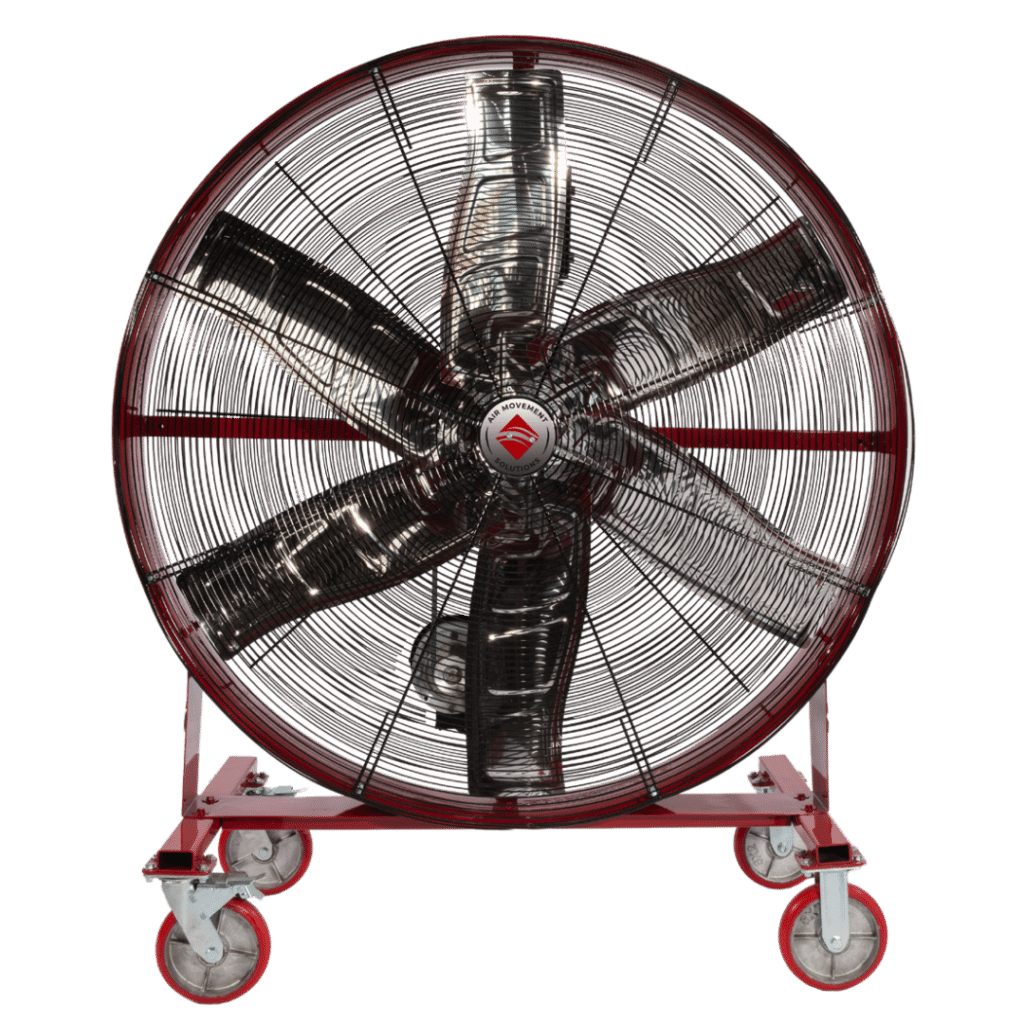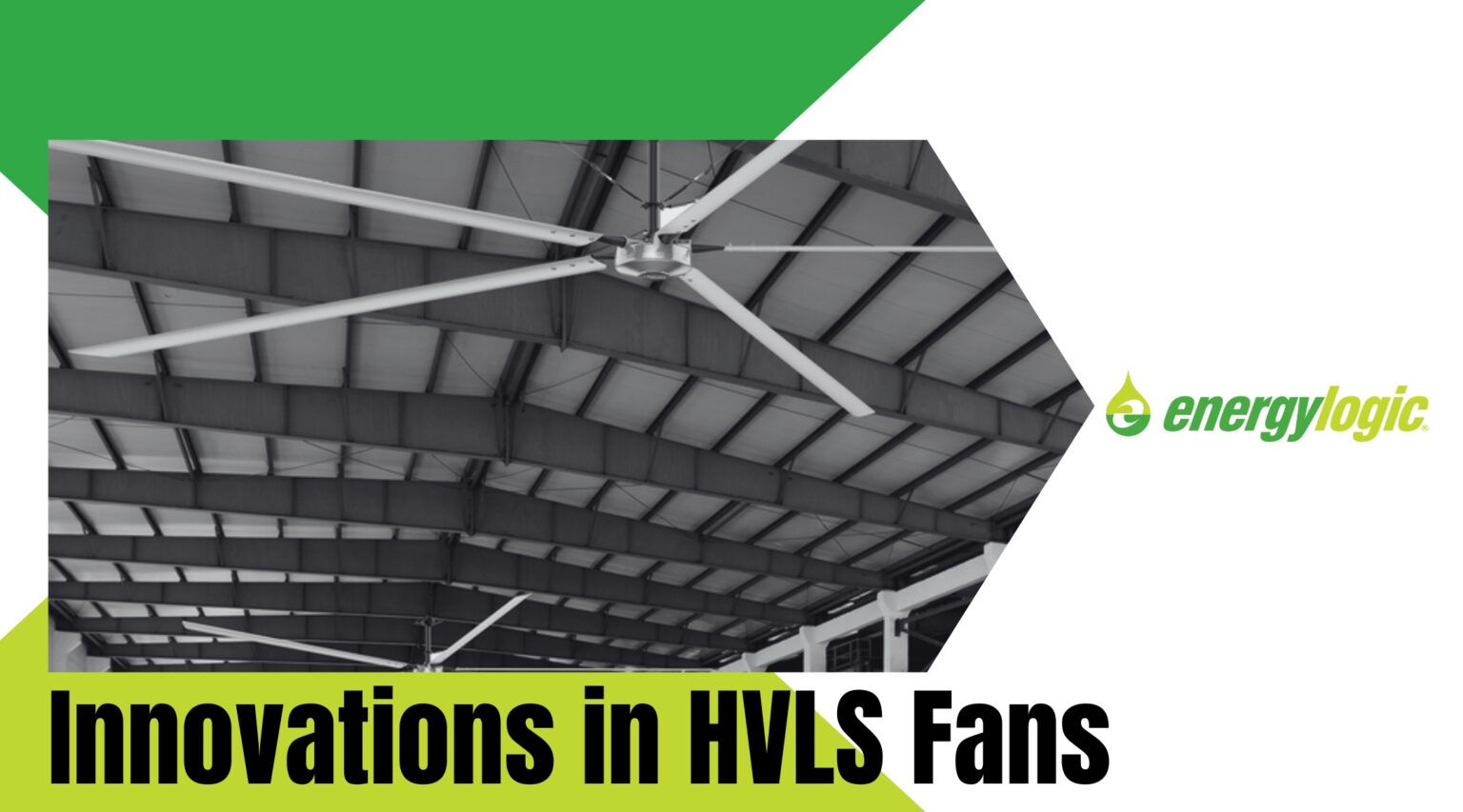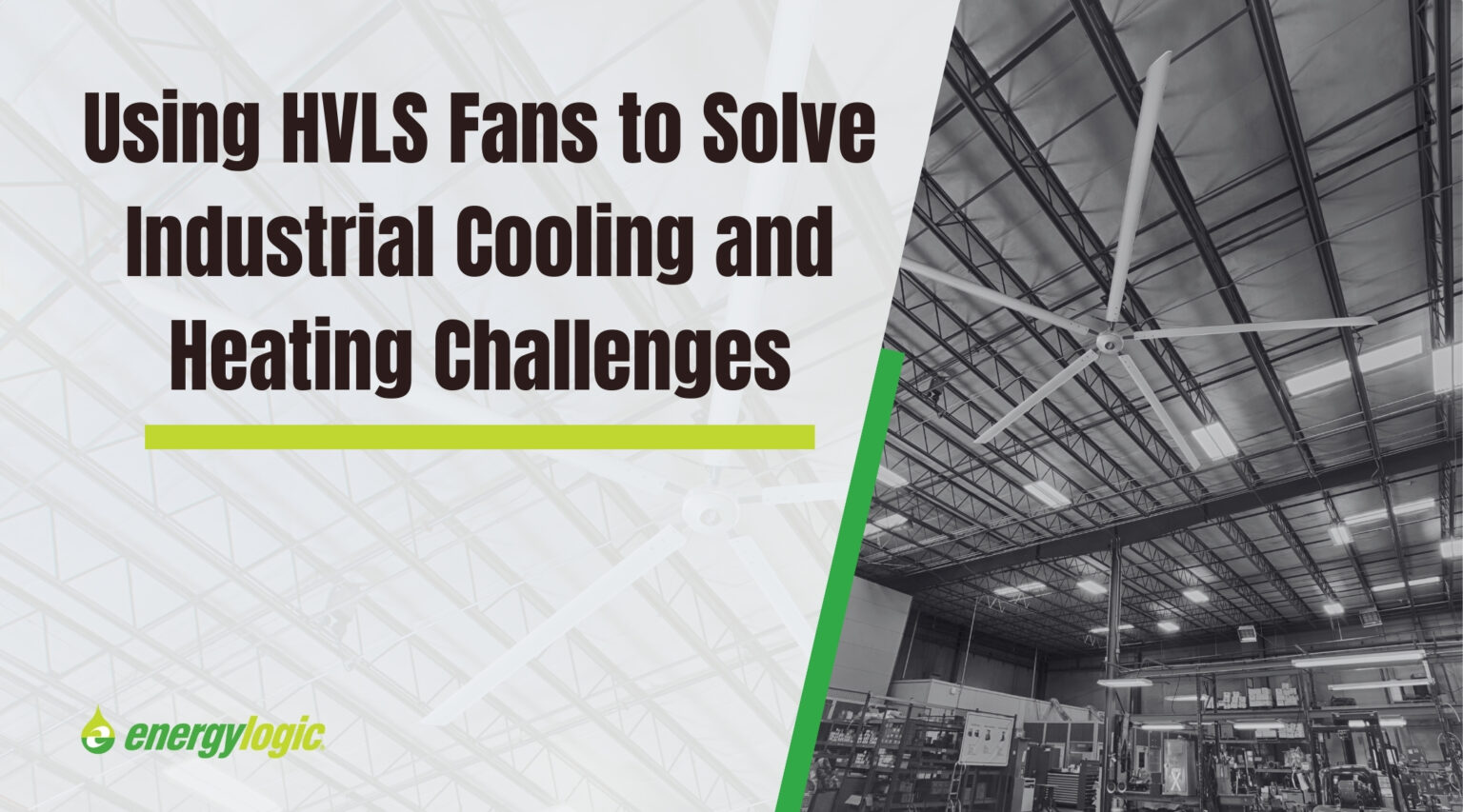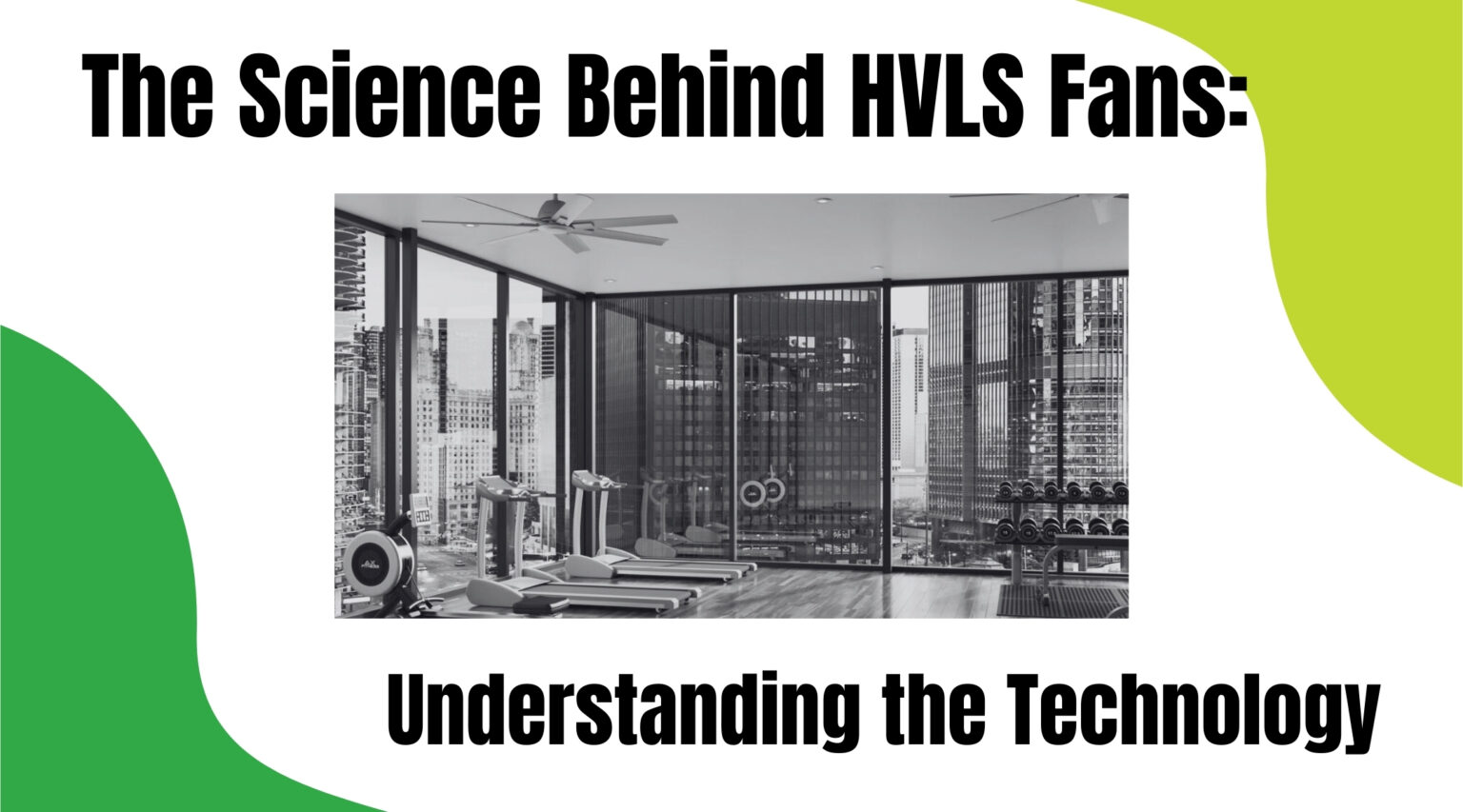
We are two years into the global pandemic. By now, we all know that SARS-CoV2 viral particles spread between people more readily indoors than outdoors. We are also aware that proper ventilation of a building can help reduce viral particle concentration. In turn, good indoor airflow makes it less likely that those particles get inhaled into the lungs.
But, how do we improve building ventilation to lower the risk of SARS-CoV2 exposure and reduce the spread of the virus?
EnergyLogic reviews a recently published ACMA report. Then we summarize the ACMA’s guidance for using HVLS fans as part of a layered approach to reducing exposure to COVID-19 in large industrial spaces.
Confusing Fan Usage Guidance from the CDC
In 2020, initial guidance from the Centers for Disease Control and Preventions (CDC) advised turning off circulatory fans. Now, the CDC’s current recommendations, dated June 2021, acknowledge that using fans indoors can improve air circulation and dilute viral particle concentrations. Several specific recommendations are listed:

- Avoid the use of high-speed settings on fans
- Use ceiling fans at low velocity and in reverse-flow direction so that air is pulled up toward the ceiling.
- Direct the fan discharge towards an unoccupied corner and wall spaces or above the occupied zone.
However, the initial guidance from the CDC in 2020 raised some questions for the Air Movement and Control Association (AMCA) International. To start, the AMCA noted that the CDC’s guidance to turn off fans wasn’t backed by research. The AMCA also realized that relatively few studies on airflow and the transmission of airborne viruses had been focused on large industrial spaces that often use HVLS (High-Volume, Low-Speed) fans. So, the AMCA began their own year-long study on the use of large diameter ceiling fans to provide better COVID guidance.
ACMA’s In-Depth Research on COVID-19 and HVLS Ceiling Fan Usage
AMCA International’s in-depth study aimed to contribute and improve on the current body of COVID-19 guidance when using HVLS fans in warehouses. The 12-month study was conducted in collaboration with an international team of authorities including scientists, engineers, and researchers. The assembled team included authorities on infectious diseases, indoor air quality, fans, and computer modeling. Together with Concordia University, they executed a series of numerical simulations to investigate the impact of large-diameter ceiling fans (those greater than 7 feet in diameter) on COVID-19 exposure in a warehouse.

AMCA published a high-level summary of the study’s findings in its November 2021 edition of InMotion magazine. The cover article, ‘AMCA COVID-19 Guidance for Large-Diameter Ceiling Fans,’ lays out the resulting guidance:
- Operating HVLS fans at maximum speed with downward airflow yields the best performance. When lower air speeds are preferred to avoid thermal discomfort, maximum speed with reverse flow is a good option.
- Reversing HVLS fans at low fan speed may reduce whole-warehouse air speed and, thus, lower diluting effect, increasing the whole-warehouse concentration at the breathing zone.
Although the study was conducted in warehouses, the results apply to most manufacturing and industrial facilities.
For full details of the study, see the final report.
EnergyLogic HVLS Fans Provide Quality Ventilation and Superior Performance

EnergyLogics MacroAir HVLS fans are an excellent way to improve a warehouse’s indoor air quality and restore peace of mind to employees. While a large building might have natural ventilation or an air exhaust system in place, neither option thoroughly mixes all of the inside air. EnergyLogic’s MaroAir HVLS fans eliminate this problem by constantly combining air from the ceiling to the floor level, improving indoor air quality. In turn, our HVLS fans can help reduce the transmission of airborne particles and viruses like COVID.
Additionally, EnergyLogic offers our customers AirViz technology which provides a visualization of airflow within a specific space. AirViz can track the speed and pattern of air moved by our HVLS fans. With this modern technology, we can predict airflow, temperatures, cooling/heating effects, and determine the best quality ventilation requirements for your building.
Experts in Indoor Air Quality
Unfortunately, it seems like this pandemic will be around much longer than we initially imagined. Improving indoor air quality with an EnergyLogic HVLS MacroAir fan is a preventive measure that can help keep your facility safe and your employees healthy. Our in-house experts can assist you with choosing the right size and number of large diameter fans for your space. We will also provide you with all the resources and advice you need to get your HVLS MacroAir fans installed, running, and improving indoor air quality.
Contact us today to learn how EnergyLogic’s MacroAir HVLS fans can help improve your facilities ventilation.




